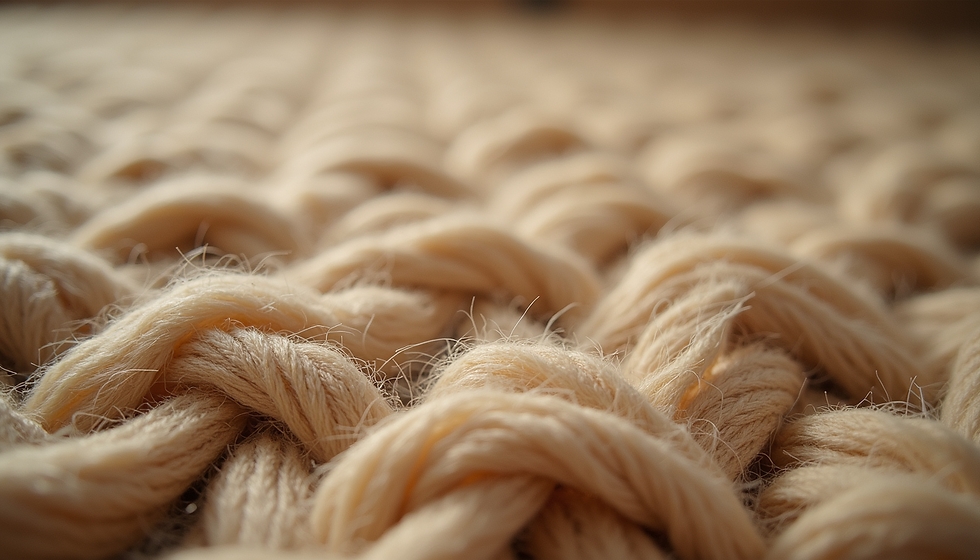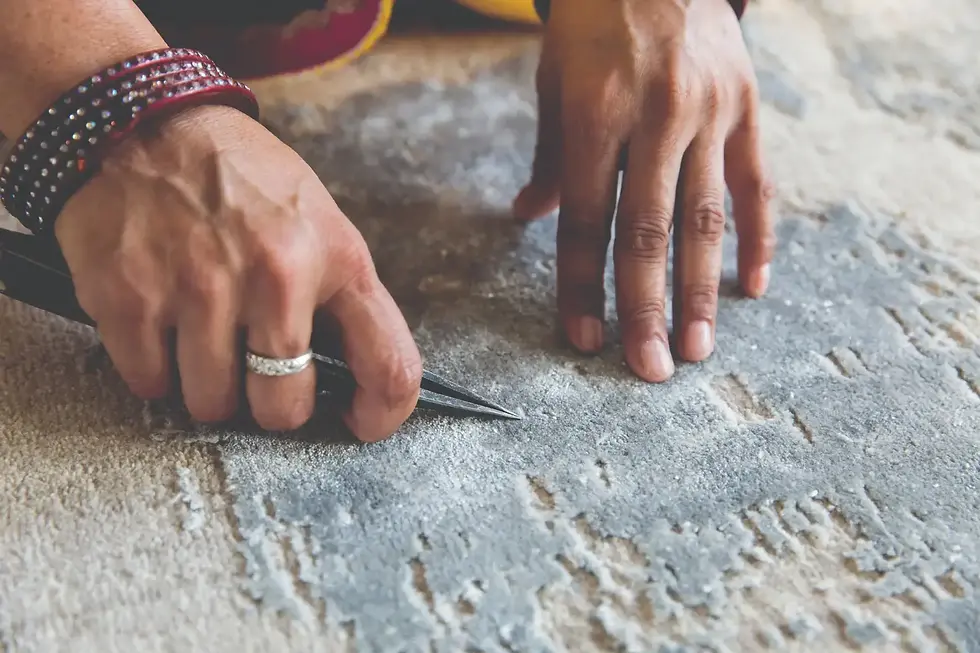GSM in Rugs: What It Means, How to Measure It & Why It Matters
- tilakrathod
- Aug 1
- 3 min read
When it comes to buying a rug, most people focus on the design, colors, or size. But there's one critical factor that influences quality, durability, and feel: GSM (Grams per Square Meter). Understanding GSM can help you choose the best rug for your space—whether you're decorating a modern home, a cozy workspace, or a commercial showroom.

What is GSM in Rugs?
GSM stands for Grams per Square Meter, and it refers to the weight of a rug per square meter of surface area. It is the most reliable metric to understand the density, thickness, and durability of any rug.
Higher GSM = Denser, more luxurious rug
Lower GSM = Thinner, more lightweight rug
Whether you’re buying a Persian rug, flatweave, shaggy rug, or vintage piece, GSM gives you a better idea of long-term performance than just looking at design or materials.
How to Calculate GSM in Rugs
You can measure GSM using this simple method:
Cut or measure a sample of 10 cm x 10 cm of rug.
Weigh it in grams.
Multiply the number by 100 to get GSM.
Example: If your sample weighs 9g, then 9 x 100 = 900 GSM.
This calculation works across wool rugs, cotton rugs, silk rugs, jute rugs, and synthetic rugs.
Why GSM in Rugs Is So Important
Knowing the GSM of a rug helps you make smarter decisions, especially when shopping online or comparing different rug types.
Benefits of higher GSM:
Increased durability (perfect for high-traffic areas)
Greater softness and plush feel
Better insulation (ideal for colder climates)
Longer lifespan
If you're choosing a rug for your bedroom, living room, office, or hallways, GSM should be one of the first things you look at.
What is GSM in Carpet
GSM by Room: Rug Density Guide
GSM by Material
Wool Rugs: Naturally dense (800–1200 GSM)
Cotton Rugs: Lightweight (400–700 GSM)
Silk Rugs: Finer weave (600–1000 GSM depending on knots)
Jute Rugs: Earthy and durable (600–900 GSM)
Synthetic Rugs: Varies (300–1300 GSM)
Real-Life Use Case
Suppose you're comparing two handloom rugs. Rug A has a GSM of 850 and Rug B has 1250. Rug A is great for a guest bedroom, but Rug B—being denser—will perform much better in a living room or commercial space where foot traffic is high.
Final Thoughts: Make GSM Your Rug-Buying Superpower
Choosing a rug based on design alone is no longer enough. With GSM, you can:
Choose the right rug for the right room
Avoid overpaying for poor-quality rugs
Find the best rug type for your lifestyle
If you want a long-lasting, beautiful rug, always ask for the GSM.
Sources / Citations
Rug Chick – “What is Rug GSM and Why It Matters”
Textile School – “GSM in Fabrics: Measuring Techniques”
RugKnots Blog – “Rug Density Explained: GSM & Durability”
The Woolmark Company – “Wool Weight and Rug Performance”
Carpet & Rug Institute (CRI) – “Carpet Construction & Weight”
Fibre2Fashion – “Fabric GSM: Importance in Home Textiles”




Comments